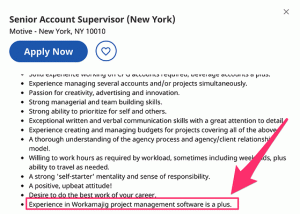— October 14, 2018
One of the biggest challenges for many sales people is getting a seat at the table with the person that matters the most. The economic buyer. The person with budget and discretionary spending authority to make decisions quickly. It’s not one of the biggest challenges because these people are awful human beings who don’t want to speak with us. Most economic buyers are very nice people. It’s the biggest challenge because they are suffering from what is becoming known as ‘seller fatigue’.

Let me explain with an example from this week.
I recently did some sales training with a Fortune 50 company. As part of the preparation I asked the SVP how many sales calls, voicemails, emails, LinkedIn messages, LinkedIn InMails, video messages, stuff in the mail etc he receives on average each day. His answer blew my socks off.
‘Probably between 100-120 pieces of outreach every single day!!!’
I’m a curious cat so asked him if he ever responded to any of it. He smiled and said ‘Occasionally. When it’s personalized and the person has clearly done their homework’. Pushing him further he went on to explain that 99% of what he receives is sh*t. His words, not mine.
He was getting visibly annoyed even talking about it. This is seller fatigue. He shared that the occasional times he does respond is when the sales person has done one thing and one thing alone. He said: ‘We are a publicly traded company. We have to be transparent. If a sales person attaches what he or she sells to one of our most strategic initiatives, that sales person is likely to get airtime with the people owning that initiative… or at least on the project team’.
Putting my compassionate hat on, I explained that many sales people have never had formal sales training and, for the ones that have, it isn’t always on topics that are moving needle like this topic.
So what is a strategic initiative? Every single publicly traded company in the US has to file a 10k each year to the Securities and Exchange Commission (SEC). Side note, I have sold to the SEC before. For anyone in government sales… I commend you my brothers and sisters. In the 10k there are things called ‘Items’. Think of them as sections in what could be described as a pretty dry document if you don’t know what you’re looking for. Now why do these Items matter?
When you are selling to a publicly traded company, it is your responsibility to know 4 things:
1. How is the company structured? If you know how a company is structured, including it’s subsidiaries and affiliates, you can oftentimes identify many more potential sales opportunities elsewhere in the organization, or simply expand the scope of your opportunity.
2. The economic health of the company. Do you want to be wasting your time selling to a company that is going out of business. Probably not… unless of course what you sell might save them. All joking aside, you also need to know if the company is crushing it. If the company is performing well, then you are potentially selling into a company where the purse strings might be a little looser… maybe.
3. The perceived competition for the company. I’m not taking about other companies that this company sees as a threat. I’m talking about threats in terms of supply chain, dependencies etc. If you can attach what your company solves for to something that the target company is concerned about… that’s a very good thing.
4. And last but not least, the strategic direction of a company. This should probably be number 1. If you know what the company is focused on, you can attach what your company sells to those strategic initiatives AND you can articulate that attachment in your outreach… ding dong… it’s go time.
Now back to the items. Every single 10k follows the same format. Knowing where to look, and for what, will save you a lot of time (which is our most precious commodity right?)
1. Corporate Structure: Item 1 – Business, Item 10 – Directors, Executive Officers and Corporate Governance.
2. Economic Health: Item 5 – Market, Item 6 – Consolidated Financial Data, Item 7 – Management’s Discussion and Analysis of Financial Condition and Results of Operations. Item 8 – Financial Statements and Supplementary Data.
3. Perceived Competition: Item 1A – Risk Factors, Item 7A – Qualitative and Qualitative Disclosures about Market Risk.
4. Strategic Direction: Item 7: Management’s Discussion and Analysis of Financial Condition and Results of Operations. It outlines for you the operational issues. If what you sell helps address something here you could be in very good shape.
Then of course there is the question of how do you leverage what you find to craft a message that will not only get a response but will get the response you want and keep that economic buyer engaged into the sales process.
Digital & Social Articles on Business 2 Community
(67)
Report Post







